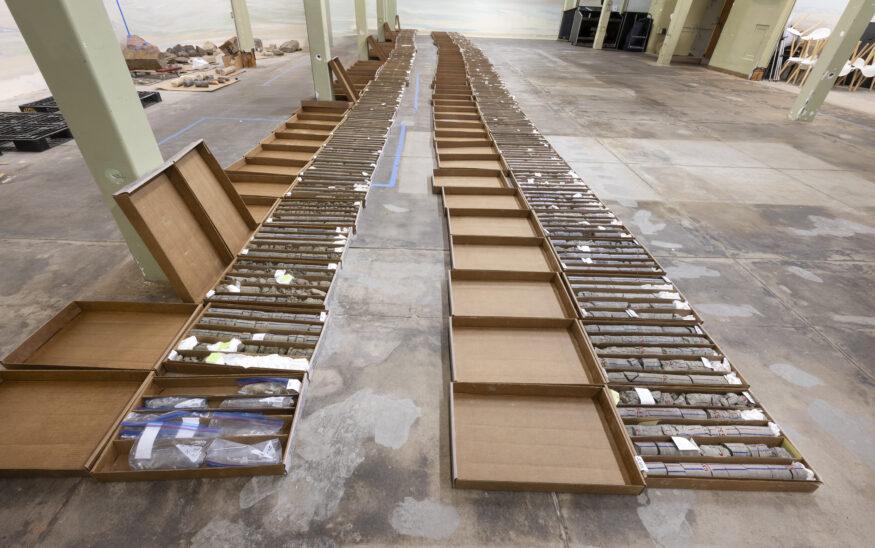Denver-In a surprising twist beneath the hustle and bustle of the Mile High City, paleontologists have uncovered a remarkable dinosaur discovery right under the parking lot of a local museum. The unexpected find, made during routine construction work, has shed new light on the region’s prehistoric past and promises to draw widespread attention from the scientific community and dinosaur enthusiasts alike. This breakthrough underscores Denver’s emerging role as a key site for paleontological research in the western United States.
Denver Dinosaur Museum Uncovers Rare Fossil Beneath Its Parking Lot
During routine maintenance work at the Denver Dinosaur Museum, construction crews made an unexpected discovery just feet below the surface of the parking lot. Paleontologists were quickly called in to examine the unearthed bones, which preliminary analysis identified as belonging to a rare species of ceratopsian dinosaur that roamed North America over 75 million years ago. This find is especially notable due to its proximity to the museum itself, providing both staff and visitors a unique, tangible connection between the present day and ancient history.
The excavation team has outlined several key features that make this specimen stand out:
- Exceptional preservation of cranial elements and frill structures
- Evidence of potential injury or disease on the fossilized bones
- Artifacts suggesting the dinosaur may have lived in a herd environment
Experts estimate that it will take several months of careful excavation and study before the full story of this prehistoric inhabitant can be pieced together, but early indications suggest it could shed new light on ceratopsian diversity and behavior in the Late Cretaceous period.
| Feature | Details |
|---|---|
| Species | Undetermined Ceratopsian |
| Age | ~75 million years |
| Location | Denver Dinosaur Museum Parking Lot |
| Condition | Well preserved with minor damage |
Experts Reveal Scientific Importance of the Newly Discovered Specimen
Unearthed beneath the museum’s own parking lot, the recently discovered fossil has sent ripples through the paleontological community. Experts emphasize that this specimen offers unprecedented insights into the evolutionary pathways of Late Jurassic dinosaurs, especially given its remarkably well-preserved skeletal structure. Unlike typical finds that are partial or fragmented, this fossil displays a near-complete skeleton allowing researchers to analyze musculature attachment points and potential locomotion abilities with much greater accuracy.
The discovery not only helps fill in crucial gaps in the fossil record but also challenges previous assumptions about regional dinosaur diversity during that era. Scientists involved highlight several key features that make this specimen particularly valuable:
- Unique cranial crest structure suggesting a new genus
- Evidence of integumentary structures indicating possible feather-like coverings
- Bone microstructures implying advanced metabolic rates
| Feature | Scientific Implication |
|---|---|
| Cranial Crest | New genus classification & behavioral insight |
| Integumentary Structures | Evolution of feathers before flight |
| Bone Microstructure | Evidence of warm-bloodedness |
Museum Advises Enhanced Site Monitoring and Community Engagement for Future Finds
The museum’s discovery has prompted a call for more rigorous oversight of excavation sites, especially in urban areas where unexpected finds may lie hidden beneath ordinary landscapes. Experts emphasize that enhanced monitoring technologies, such as ground-penetrating radar and remote sensing tools, should become standard practice to prevent accidental damage to invaluable fossils. Alongside technological measures, the museum stresses the importance of developing stronger communication channels with local communities to foster awareness and encourage public participation in preservation efforts.
Community engagement initiatives are now seen as vital to safeguarding paleontological heritage while promoting educational opportunities. By involving residents through workshops, site tours, and informational campaigns, the museum aims to build a network of informed advocates who can alert authorities to potential discoveries and help protect these natural treasures. This collaborative approach not only aids in the protection of fossils but also enriches public understanding and appreciation of paleontology’s role in uncovering Earth’s ancient history.
- Implement regular site scans and monitoring schedules
- Increase funding for community outreach programs
- Develop public reporting systems for fossil sightings
| Strategy | Benefit |
|---|---|
| Advanced scanning tech | Early detection |
| Community workshops | Public awareness |
| Reporting networks | Quick response |
Final Thoughts
The unexpected discovery beneath the Denver dinosaur museum’s parking lot not only sheds new light on the prehistoric life that once roamed the region but also underscores the potential for significant paleontological finds in urban settings. As researchers continue to analyze the fossils unearthed from this remarkable site, the museum anticipates that this breakthrough will enhance both its scientific contributions and public exhibits, inspiring curiosity and education for years to come.
